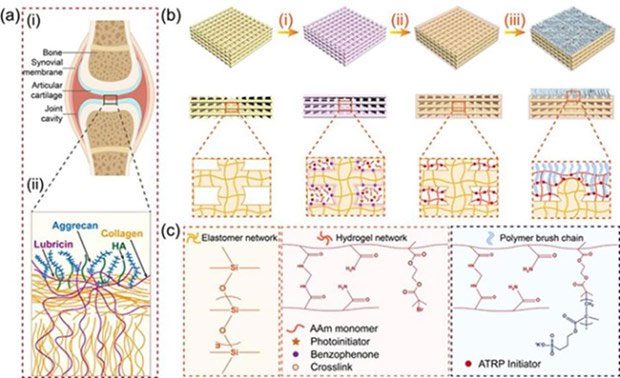Chinese researchers have developed a two-layer lubricant composite that demonstrates excellent mechanical strength and a unique stress dissipation mechanism.

Cartilage is a soft material layer that acts as a cushion between joints. (Source: shine.cn)
A study published in the journal ACS Applied Materials and Interfaces indicates that Chinese scientists have successfully developed a cartilage-like lubricant composite with high mechanical durability.
Cartilage is a soft material layer that functions as a cushion between joints, preventing the ends of bones from grinding against each other and facilitating smoother movement. Natural articular cartilage exhibits extraordinary biological performance based on the lubricating molecules on its surface and its ability to withstand mechanical forces.
However, natural articular cartilage can be damaged due to aging, pathological effects, or injuries, necessitating replacement to maintain mobility.
Currently, hydrogels are considered a potential alternative to natural cartilage because of their low surface friction and good biocompatibility. However, hydrogels lack sufficient durability and mechanical strength, which limits their applications.
Inspired by the excellent mechanical properties and superior surface lubrication mechanisms of natural joint cushions, researchers from the Lanzhou Institute of Chemical Physics (Chinese Academy of Sciences) have developed a two-layer lubricant composite that exhibits outstanding mechanical strength and a unique stress dissipation mechanism. In the upper lubricant layer, this composite demonstrates superior friction reduction and wear resistance during mechanical movement.
According to the scientists, the design idea for this new material is expected to be applied in fields such as biological lubrication and soft robotics—a subset of robotics focused on technologies that closely resemble the physical characteristics of living organisms.
Experts describe soft robotics as a biological form in which the traditional and somewhat rigid aspects of robots are replaced with much more complex models that mimic the life of humans, animals, and plants.


















































